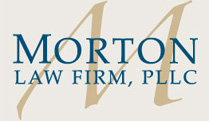Protecting the Home
Nursing home residents do not have to sell their homes in order to qualify for Medicaid, as long as the nursing home resident intends to return home. Additionally, the house may be kept if the Medicaid applicant’s spouse or another dependent relative lives there. However, after a Medicaid recipient dies, the state must attempt to recoup from his or her estate whatever benefits it paid for the recipient’s care. This is called "estate recovery."
The house would be included in this "estate", and therefore subject to Medicaid forfeiture. For many people, establishing a "life estate" and transferring a "remainder" is the most simple and appropriate alternative for protecting the home from estate recovery. A life estate is a form of joint ownership of property between two or more people. They each have an ownership interest in the property, but for different periods of time. The person holding the life estate possesses the property currently and for the rest of his or her life. The other owner has a future or "remainder" interest in the property. He or she has a current ownership interest but cannot take possession until the end of the life estate, which occurs at the death of the life estate holder. As with any property transfer, the deed into a life estate can trigger a Medicaid ineligibility period. Additionally, the transfer of a remainder interest does not qualify for the annual gift tax exclusion, currently $12,000 annually, since it is not a present interest in property. Accordingly, a gift tax return must be filed. This transfer will seldom result in any taxes being owed, but will often require a reduction of the gift giver’s unified credit for up to $1 million of lifetime gifts. Among other benefits of this type of partial transfer is the ability of the gift giver to remain eligible for any property tax breaks such as homestead exemption, and property tax discounts for the aged and disabled. A complete transfer to a third party such as the children will not preserve these property tax reductions, although may be appropriate for other reasons. Transfers of remainder interests are a strategy that should be considered as part of an overall asset protection plan, and only after a thorough explanation of the risks and benefits of such transfers. Such transfers should only be entered into after counsel with an Elder Law attorney.
Example:
Jane gives a remainder interest in her house to her children, George and Mary, while retaining a life interest for herself. She carries this out through a simple deed. Thereafter, Jane, the life estate holder, has the right to live in the property or rent it out, collecting the rents for herself. On the other hand, she is responsible for the costs of maintenance and taxes on the property. In addition, the property cannot be sold to a third party without the cooperation of George and Mary, the remainder interest holders.
When Jane dies, the house will not go through probate, since at her death the ownership will pass automatically to the holders of the remainder interest, George and Mary. Although the property will not be included in Jane’s probate estate, it will be included in her taxable estate. The downside of this is that depending on the size of the estate and the state’s estate tax threshold, the property may be subject to estate taxation. The upside is that this can mean a significant reduction in the tax on capital gains when George and Mary sell the property because they will receive a "step up" in the property’s basis.
Life estates are created simply by executing a deed conveying the remainder interest to another while retaining a life interest, as Jane did in this example. Once the house passes to George and Mary, the state cannot recover against it for any Medicaid expenses Jane may have incurred.
Another method of protecting the home from estate recovery is to transfer it to an irrevocable trust. Trusts provide more flexibility than life estates but are somewhat more complicated. Once the house is in the irrevocable trust, it cannot be taken out again. Although it can be sold, the proceeds must remain in the trust. This can protect more of the value of the house if it is sold. On the other hand, since the entire house is transferred to the trust, rather than a partial ownership, the resulting period of ineligibility for Medicaid is longer — up to five years, or longer if an application for benefits is prematurely filed.









One Person has left comments on this post
is there a time frame on tranfer of proprty either with a life estate or a deed to famiy where by if grantor goes to nursing home state can come after you for cost of stay in nursing home?